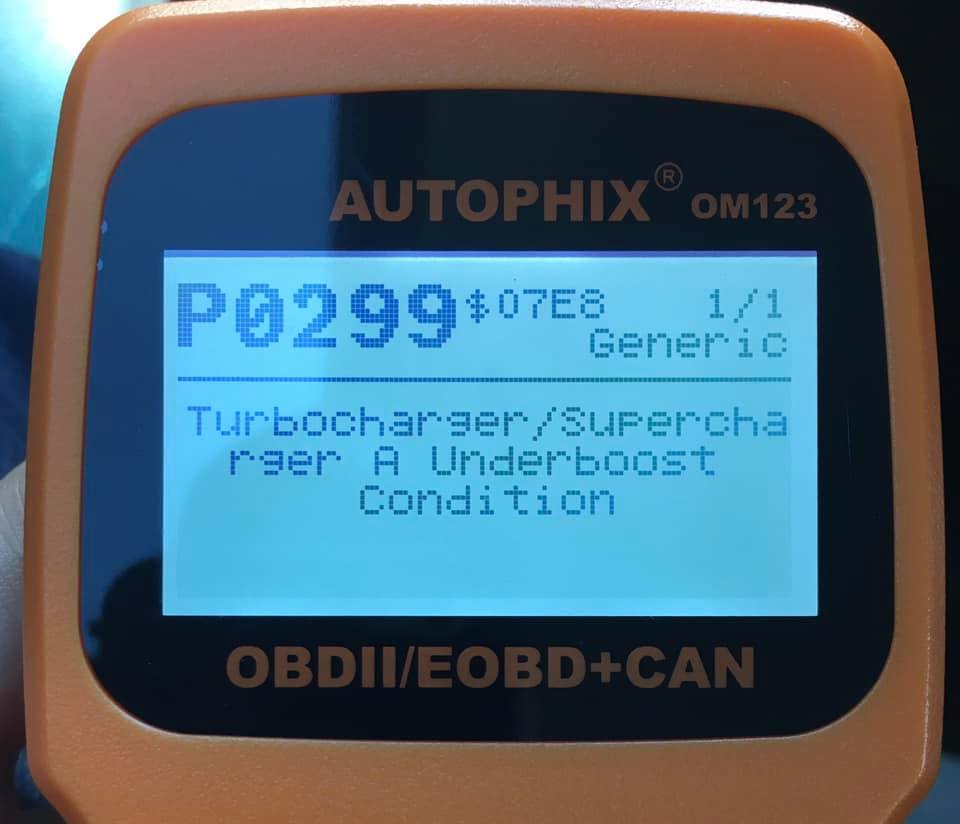< Back to Technical Articles
The P0299 code is common the GM 1.4L Turbo LUV/LUJ engine. Here's why it happens and how to diagnose it.
How the ECU reports P0299
The P0299 code is common the GM 1.4L Turbo LUV/LUJ engine. Here's why it happens and how to diagnose it.
How the ECU reports P0299
P0299 is an underboost code, triggered when the ECU detects that an underboost condition exists. Boost is the amount of positive pressure that is being produced downstream of the turbocharger. With turbo engines, the ECU analyzes a number of parameters, both calculated and measured (with sensors) related to boost. Parameters may include mass air flow sensor readings, ambient temperature, engine load, RPM, and fuel injector duty cycle. Given the values on these parameters, the ECU expects to see a certain amount of boost on the MAP (manifold absolute pressure) sensors (there's one in the charge pipe and one on the intake manifold) based on the calibration set by GM's engineers. In other words, the ECU knows that for a given engine load, air intake, and fuel use (among other parameters), the turbo should be making X PSI of boost. To account for variations in effiiency and manufacturing, the ECU does allow for some variance in how much more or less boost it will allow than what it is expecting to see, up to a particular threshold. When that threshold is exceeded, the ECU triggers the P0299 underboost code. The remanider of this article is specific to the GM 1.4L Turbo LUV/LUJ engine found in the Chevy Cruze, Chevy Sonic, Chevy Trax, and Buick Encore.
Root Causes of P0299
The first thing people jump to is that the turbo must be bad, and while this may be true, it isn't always the case. Bear in mind that P0299 is only triggered the the engine makes less boost than expected, below a certain threshold. While the efficiency of the turbo may in fact have been reduced, that efficiency loss alone may not be ebough to exceed the threshold that triggers the P0299 code, but combined with other factors, it may be enough. You can often resolve the P0299 code by addressing just one of these root causes, provided that the turbo has not completedly failed. Here is a list of root causes common in these engines:
-
Boost leaks. A boost leak can exist anywhere between the turbocharger itself and the cylinder head. Common areas to check are the charge pipes, charge pipe to intercooler connections, the charge pipe to throttle body connection, anything mounted or connected to the intake manifold, or the intake manifold gasket. You can use the Boost & Coolant Leak Test Kit to help diagnose boost leak locations if you're having trouble finding them.
-
Intake manifold check valve failure. When the intake manifold check valve goes missing, tears/cracks, or leaks, an internal, infinite boost leak loop exists where boost in the intake manifold is leaked through the large PCV pipe back into the turbo inlet. We've received many reports of the P0299 code being resolved just by installing one of our PCV Fix kits. You would need to visually inspect the intake manifold for the presence of a check valve, and boost leak test if there is any concern of it sealing correctly.
- Bypass Valve Failure. The bypass valve is located underneath the intake manifold on the passenger side. You can find it by following the tiny nylon line that sits underneath the PCV pipe. It will lead you to a rubber hose section that connects to a solenoid. It is common for this solenoid to get gummed up and start sticking, which allows manifold vacuum to leak through the solenoid and open the bypass valve, resulting in the turbo losing boost.
-
Turbocharger failure. There are two common areas where the turbo fails that cause a P0299. First, the wastegate arm can wear out and begin to stick, failing to fully close or seal against the wastegate housing. Second, the wastegate housing can develop cracks. Keep in mind that the presence of cracks alone is not enough to indicate a problem, as turbos typically develop these cracks in the first few thousand miles of operation if not sooner. A crack in the wategate housing is totally normal. Over time, however, these cracks can enlarge or more cracks can develop as well. In both of these failure mode, the end result is that exhaust pressure that should be spinning the exhaust turbine, which then spins the compressor turbine that creates boost, gets leaked instead directly into the exhaust pipe. This loss of pressure results in a loss of efficiency of the turbo, which triggers a P0299. When checking the turbo, check for free operation of the wastegate arm in addition to the size and number of cracks surrounding the wastegate housing.
The goal of this article is to help you diagnose issues with your engine in a methodical manner instead of just thrownig parts at a problem in hopes that it will resolve it. I've seen too many people install new turbos only to have the P0299 code reappear shortly afterward because they didn't address one of the other potential root causes first. Since the turbo replacement is the most expensive and most difficult fix for this code, be sure that the other root causes have been addressed before replacing the turbo.

